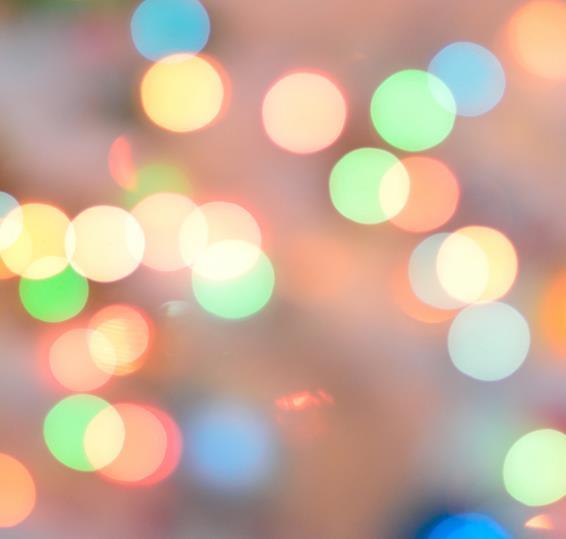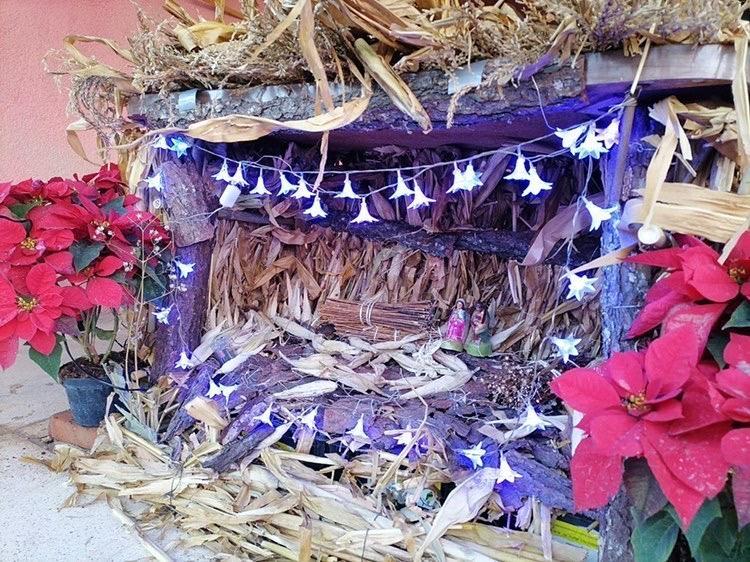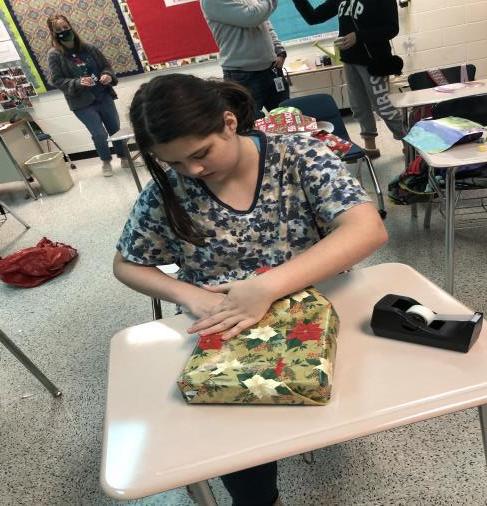
7 minute read
W i nter G ua rd
W i nter G ua rd, R i flery, a n d o th er w i nter s p o rts Written by: Alexis Chandler Photo Provided By: Emily Blalock
Winter guard is an indoor color guard sport and performance art derived from military ceremonies. Unlike traditional * color guard, winter guard performances and contests are held indoors, usually in a gymnasium or an indoor arena.
Advertisement
Emily Blalock is a sophomore and is a member of winter guard. While reflecting on her experience, she said, “I think my favorite memory would have to be last year’s season, just because of how supportive everybody was and how beautiful of a show we had with the gracefulness and the music and just the aspect of the show in general.”
The way Emily describes the winter guard program is, “one huge family in all honesty we love each other we support each other and we're always there for each other whether it's just helping each other with choreography or helping each other outside of winter guard . Any sports team becomes like your family.”
A memory that really shows that familial aspect , according to Emily is “last year when I was first diagnosed as a type one diabetic, everybody was so interested in learning. I couldn't do really anything except for the first movement of a show and everyone was just so supportive and helped me to love who I am now.”
She talked about what she looks forward to during the winter guard season: “I would have to say that my favorite part is the competition aspect because we get to show who Creekview is and how powerful of a team we are. We also get to see other people performing and how beautiful their shows are, and we all get to meet new people and we get to show, 'Hey we’re Creekview, we’re the Grizzlies, we know what we are doing, we are this powerful of a team.'”
Jack Poulos is a senior and participates in riflery. He is a part of the marksman team with Pickens County Sportsman Club. It’s a classic shooting sports team. When thinking of his favorite memory of the team he said, “At some point I really realized that riflery is more of a real sport. When I first started it didn’t really feel like a regular team sport, per se. We had our state match in 2018 in Athens, GA and at that point I really had bonded with my team mates a lot more than I usually did. I kind of realized 'ok this is a real sport and I’m actually having fun at it and I hate sports,' so it was a big moment for me.”
When asked about his experience in riflery he said “It’s great. I started in freshman year and I didn’t really have any main sports that I played so I felt kind of left out, but when I finally had gone to a rifle team and started doing really well it was amazing. I finally felt like I had a place in sports.”
Poulos said, “I feel like a lot of the stigma about riflery and other shooting sports comes from safety. It doesn’t feel like a regular 9 sport, but when you are doing it everything feels completely safe, no accidents are even possible. But watching a match, I don’t really know how I could compare it. The teams work together just like friends would, just like a regular team.” As sports teams become like family,7 they want to make everyone feel included.
The basic principle of inclusion is to dismiss misunderstanding. If we were to choose the unknown, then the risk of failure is great. If we were to choose the known a complete 100% of the time, then we would simply just be continuing around in a circle.
A common misconception about the known is it does not change, nor does the known betray. This is untrue. The known does in fact change. The known are the people in which we associate ourselves with. There are two sections of the known. The first group being the people in which we associate with on the outside. The second being the group of people in which our personalities truly intersect. The common person usually has a few people that intersect both of these groups. By including the unknown, we are breaking the barriers of misconceptions. By including the unknowns, it can broaden our understanding of basic human emotions. The small question, would you like to sit at lunch with us? could not only help the unknown person, but the person that said it. The beautiful fact of the unknown person is that they are unpredictable and can bring anything to the table. A new perspective on almost anything in the entire world. The inclusivity of the unknown is not only a challenge for the socially accepted but also a challenge for anyone that struggles with including new personalities into their personal lives. In my eyes, fear of rejection is of the most common obstacles we face when choosing to allow others to integrate into our personal circle. The most inclusive act is not asking someone to sit with your friend group, but the ability to accept and coexist. To include people in our daily thoughts and educate ourselves on what our place is to them. That is inclusivity. To be open-minded about the physical and mental appearances of others can be the most Of An Orthodox Teen compassionate form of inclusiveness. There is not a single person in this world that has the ability to read a mind. This includes the reader of this piece. That is just the more reason to be compassionate to others in our surroundings. I moved to Creekview with an uncommon personality. I was overwhelmed with stereotypes. The boldness of my personality made the ability to “blend in with the crowd” difficult. Whether one can attest that this is a great trait or not is beside the point.
Slowly my own misconceptions started gaining space in my mind and before long I thought I had everyone figured out. However, this was not the case. One of the girls I thought I figured out asked if I would like to hang out with her and her friends. Immediately looking at myself, I became discouraged from comparing myself with this group of girls. Throughout the next couple of sleepovers and parties, it seemed I had demolished the very wall I built around myself. My misconception of these girls became apparent and their simple kindness opened my mind to an array of possibilities. These are the personal thoughts of an orthodox teenager. This is the power of inclusivity. The struggle of comparing societal acceptance to one’s own personal acceptance is largely the factor in closemindedness. There simply isn’t a reason for someone to degrade another human for the color of their skin, their religious ideology, gender, sexual preferences, or etc. in my mind. The simple fact of the matter is the character in which we decide every day to seep from our mouths and actions is the most important factor. The labels some people devalue others with is the reason inclusivity to other perspectives and ideologies is so uncommon, especially as a teenager. Some are so susceptible to the words and opinions of people they believe to be superior that they will simply come to the conclusion that another person’s judgement is correct even if they know it's wrong. The words that simply bother me the most are the exact words that are not needed in our language, the words that benefit nobody, the words that get stamped on somebody and burned into their skin without reason. The branding of these labels on our skin is a prime example of the power that labels themselves have. She’s fat. He’s too skinny.Did you hear what she did at the Halloween party?He’s gay. She’sliberal. He’s aRepublican. They’re transgender. None of these labels have anything to do with the character of someone. Not being openminded about someone for personal moral stance is one thing, but to simply hate because you don’t want to educate yourself makes it very difficult for people do be openminded about you. One does not need to physically include to be inclusive, but to be openminded to others is the most beautiful form of acceptance. To mentally include and not judge could potentially have the power to stop the mental branding of labels. The most basic form of inclusivity is non-judgmental open-mindedness.




